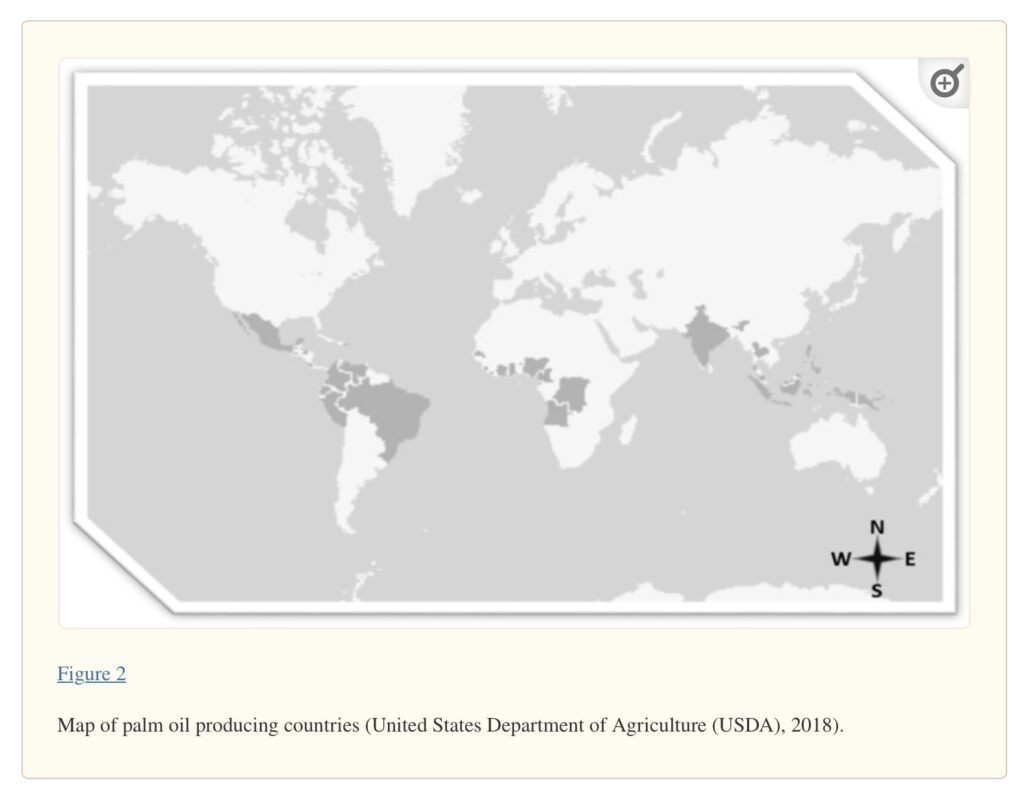
Palm oil imports to the USA are expected to rise following Malaysia’s 2025 tariff exemption, particularly for refining into renewable diesel and jet fuel. This policy shift provides a significant advantage for Malaysian palm oil, especially as U.S. producers look for price-competitive, reliable feedstocks amid ongoing decarbonization targets.mpoc+1
Expected Importers and Industry Players
- Major importers likely to engage in this market include Cargill, Wilmar International, IOI Group, and Musim Mas, all of which already have substantial U.S. market presence and distribute certified palm oil, increasingly RSPO-sustainable products.usimportdata+2
- Cargill in particular has shifted its portfolio to RSPO-certified palm oil only and has invested in new refineries to support U.S. demand for sustainable and traceable palm products.ofimagazine+1
Cherry Point Refinery and U.S. Renewable Capacity

- BP’s Cherry Point refinery in Washington state has recently doubled its renewable diesel capacity and can now coprocess nearly 110 million gallons per year from feedstocks such as palm oil, waste vegetable oil, and animal fats.hydrocarbonprocessing+1
- The facility’s investment and expansion signal strong expectations for increased renewable diesel output using a mix of available oils, with palm oil becoming more attractive due to lower tariffs and competitive global pricing.
- Other major renewable diesel and jet fuel facilities are concentrated in California, Louisiana, Nebraska, and Alabama, with ongoing expansions and new plant construction reflecting national and California Low Carbon Fuel Standard demand. The U.S. had plants in at least 13 states as of 2025, with the largest current production clusters in California and Louisiana.farmdocdaily.illinois
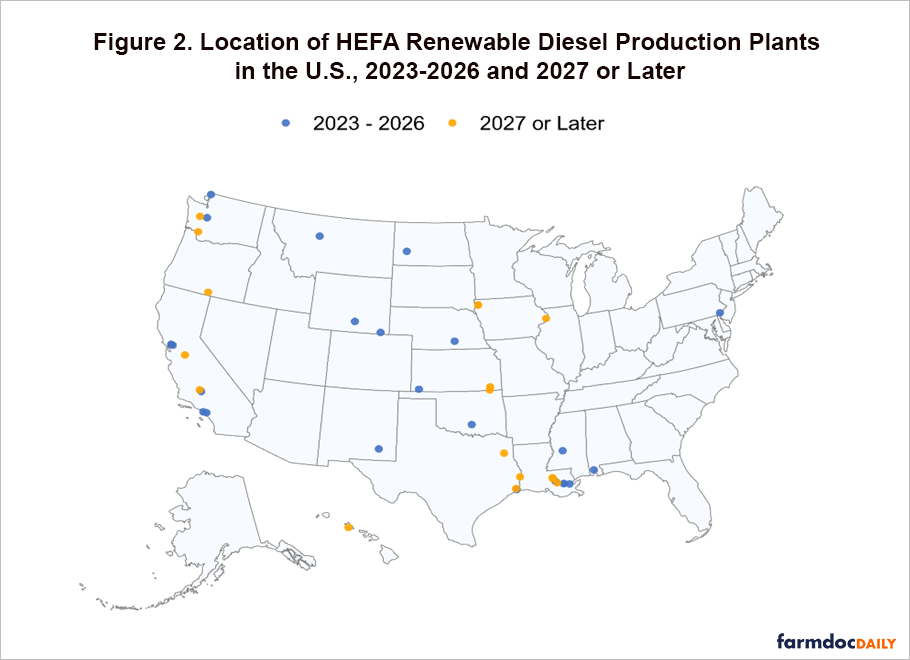
Soy and Corn Feedstock Viability
- An increase in cheap palm oil imports does put downward pressure on the viability of soy and corn as renewable fuel feedstocks. When palm oil prices fall or tariffs are reduced, producers may shift away from higher-priced domestic oils toward more cost-effective imported palm oil—unless policy restricts palm oil for sustainability reasons. This dynamic has already caused dips in soy oil use for biodiesel, as observed when palm oil prices temporarily undercut soy.sciencedirect+1
- U.S. biofuel policy must now grapple with the interconnected economics of soy, corn, and palm oil: low-cost palm oil can depress demand for domestic soy and corn vegetable oils as renewable diesel/jet feedstock, potentially undermining farm economics and bioenergy targets tied to local crops.sciencedirect
Summary Table:TopicDetails (2025 context)Palm Oil Import IncreaseYes, expected to rise; Malaysia exempted from U.S. tariffsmpoc+1Main ImportersCargill (RSPO-certified only), Wilmar, IOI, Musim Masusimportdata+1Cherry Point RefineryExpanded: doubles renewable diesel capacity, coprocesses mixed oilsbiobased-dieselOther U.S. SitesCalifornia, Louisiana, Nebraska, Alabama, more under expansionfarmdocdaily.illinoisSoy/Corn ViabilityThreatened by cheap palm oil; market dynamic can reduce demand for U.S. oilsusimportdata+1
In summary, Malaysia’s tariff exemption is poised to boost palm oil imports for renewable fuels, with large traders like Cargill and facilities like Cherry Point expected to play key roles. The growth of palm as a cheap feedstock does apply pressure to domestic soy and corn oil markets.
Renewable Fuel
The United States defines the term “renewable fuel” in its mandatory biofuel program, the Renewable Fuel Standard (RFS), as fuel that is made from renewable biomass, including plant-based materials like corn, soybeans, sugarcane, and oil palm trees as well as waste materials like used cooking oil and animal fats.

The RFS program requires a certain volume of renewable fuel to replace or reduce the quantity of petroleum-based transportation fuel, heating oil, or jet fuel.

Gasoline and diesel fuel are both petroleum products, but they have significant differences in their use, composition, and properties. Here are some of the key differences between gasoline and diesel fuel:
- Composition: Gasoline is more refined than diesel fuel, which makes it thinner and more volatile. Diesel fuel is thicker and denser than gasoline, which means it evaporates more slowly and has a higher energy density1234.
- Efficiency: Diesel fuel is more efficient than gasoline, meaning that it produces more energy per gallon of fuel. Diesel engines are also more efficient than gasoline engines, especially at low speeds and under heavy loads15.
- Power: Gasoline burns faster than diesel fuel, which allows it to produce more horsepower. Diesel fuel, on the other hand, produces more torque, which is better suited for heavy-duty applications such as hauling and towing123.
- Emissions: Diesel fuel produces less carbon dioxide emissions than gasoline, but it produces more nitrogen oxides and particulate matter, which can be harmful to human health and the environment54. Carbon dioxide is responsible for approximately 64 percent of the total warming influence from human-produced greenhouse gases as of 2022. Since 1990, CO₂ has contributed 78 percent of the increase in the atmosphere’s heat-trapping capacity.
- Lubrication: Diesel fuel has lubricating properties, which can help protect the engine from wear and tear. Gasoline does not have these properties, which means that engines that run on gasoline require additional lubrication3.
- Ignition: Gasoline is ignited by a spark plug, while diesel fuel is ignited by the heat generated by compressing the fuel-air mixture in the engine64.

Gasoline cannot be made from diesel, as they are two different types of fuel with different chemical compositions and properties1. Gasoline is typically made from crude oil, while diesel is made from crude oil or other sources such as biomass2. Palm oil can be used to make biodiesel, which is a renewable alternative to diesel fuel3. But it can not be used to make gasoline.

Trucks manufactured in the USA are more likely to run on diesel than gasoline, as diesel engines are more efficient and provide more torque, making them better suited for heavy-duty applications such as hauling and towing4.

The type of fuel used in private cruising boats varies depending on the size and type of the boat. Small boats and pontoons meant to go fast usually run on gasoline perhaps blended with ethanol, while larger boats running at displacement speeds may require diesel5.

Fishing boats, which are commonly used in the marine industry, typically run on diesel fuel3.

In summary, gasoline cannot be made from diesel, and palm oil can be used to make biodiesel, which is a renewable alternative to diesel fuel. Trucks manufactured in the USA are more likely to run on diesel than gasoline, and the type of fuel used in private cruising boats varies depending on the size and speed characteristics of the boat. Gasoline and diesel fuel are both petroleum products, but they have significant differences in their composition, efficiency, power, emissions, lubrication, and ignition. Gasoline must be made from fossil based crude oil but it can be blended with ethanol which is encouraged by the USA Renewable Fuel Standard.
The United States has seen a significant increase in palm oil imports in recent years. Between January 2024 and January 2025, palm oil imports increased by $15.4 million (9.54%), from $161 million to $177 million[1]. This continues a longer-term trend, as palm oil imports showed an average annual growth rate of +2.4% from 2013 to 2024, with particularly strong growth in 2021 when imports increased by 19%.
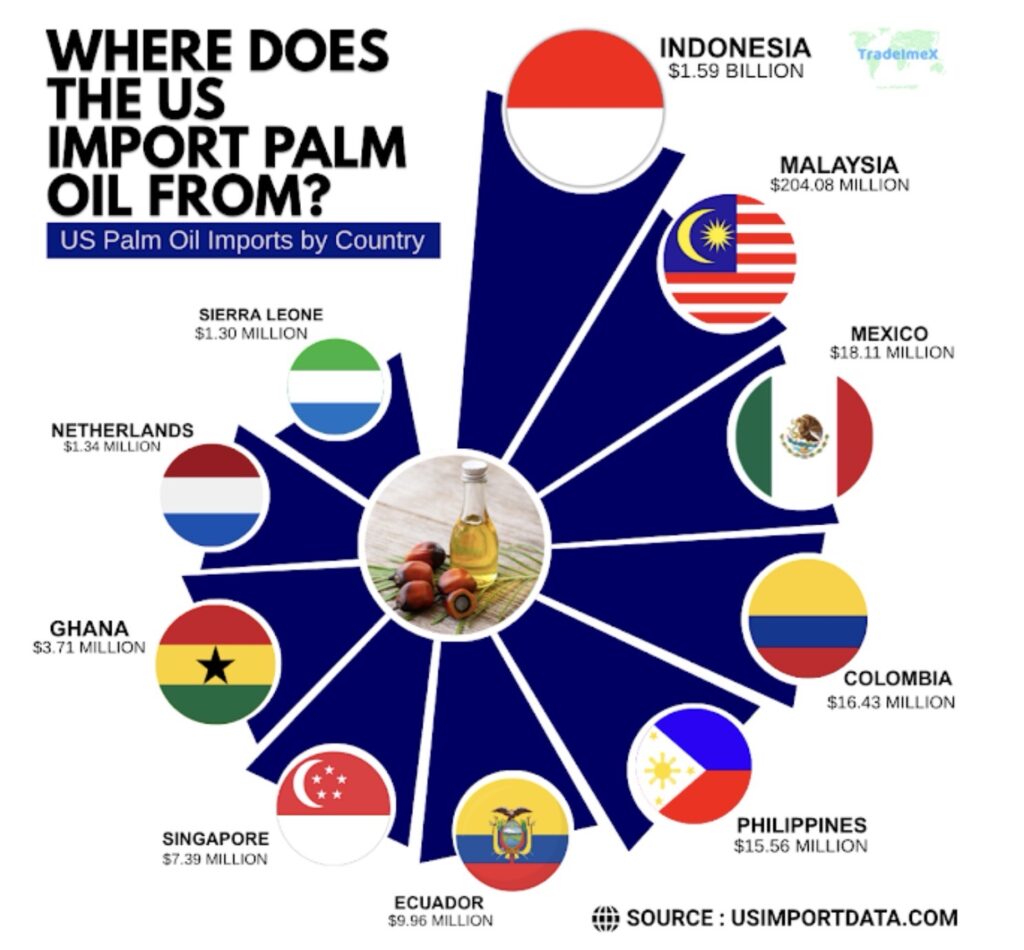
In terms of volume, the U.S. imported approximately 1.8 million tons of palm oil in 2024, though this represented a slight decrease of 4.1% compared to 2023, when imports peaked at 1.9 million tons. Despite this recent small decline, the overall trend shows substantial growth over the past decade.
The vast majority of palm oil imported to the United States comes from two Southeast Asian countries:
- Indonesia: By far the largest supplier, accounting for 90% of total U.S. palm oil imports in 2024 (approximately 1.6 million tons valued at $1.6 billion)[2]. In June 2023, Indonesia supplied 97% of refined palm oil imports to the U.S.[5]
- Malaysia: The second-largest supplier, providing about 154,000 tons in 2024, representing roughly 10% of total imports with a value of $170 million[2].
For crude palm oil specifically, the import sources are more diverse, with Honduras ($26.2 million), Nicaragua ($1.77 million), Ecuador, Guatemala, and Liberia being the top exporters to the U.S. in 2021.
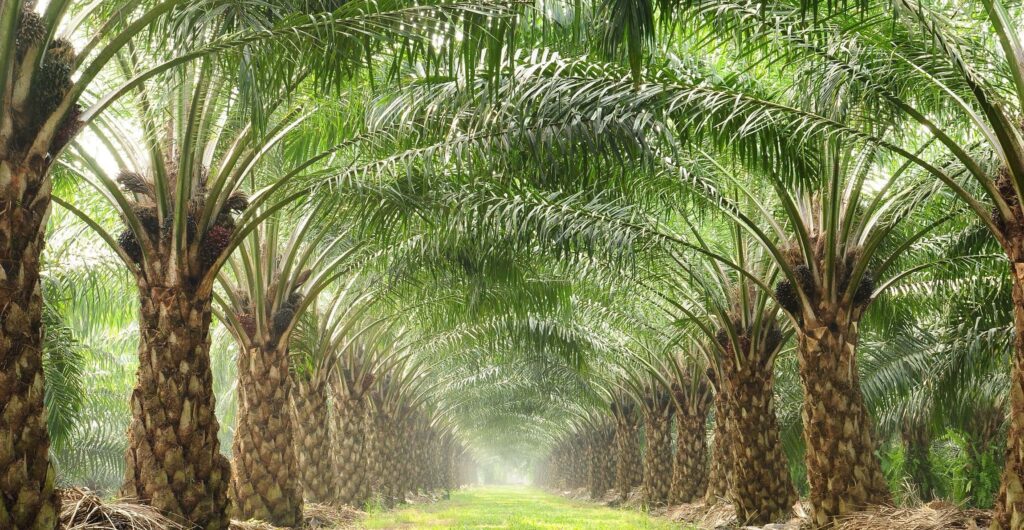
The increase in palm oil imports appears to be partly driven by the Renewable Fuel Standard (RFS), which has diverted significant amounts of domestic soybean oil to biodiesel production. As almost one-third of all U.S. soybean oil has been redirected to biodiesel production, food manufacturers have increasingly switched to alternative oils, including palm oil. This substitution occurs because consumers generally cannot distinguish between products made with different vegetable oils, allowing manufacturers to switch ingredients based on price without affecting consumer preferences.
The U.S. palm oil market is expected to continue growing, with projections suggesting it will reach $2.6 billion by 2035. Refined palm oil constitutes the vast majority (98%) of palm oil imports to the United States, with crude palm oil accounting for only 1.5%.
The USA’s RFS program has four renewable fuel categories, which are biomass-based diesel, cellulosic biofuel, advanced biofuel, and renewable fuel (referred to as conventional biofuel).
Renewable diesel and biodiesel are considered advanced biofuels and can be used to fulfill the biomass-based diesel mandate as well as the total advanced mandate.
For a fuel to qualify as a renewable fuel under the RFS program, the Environmental Protection Agency (EPA) must determine that the fuel qualifies under the statute and regulations. Among other requirements, fuels must achieve a reduction in greenhouse gas (GHG) emissions as compared to a 2005 petroleum baseline.
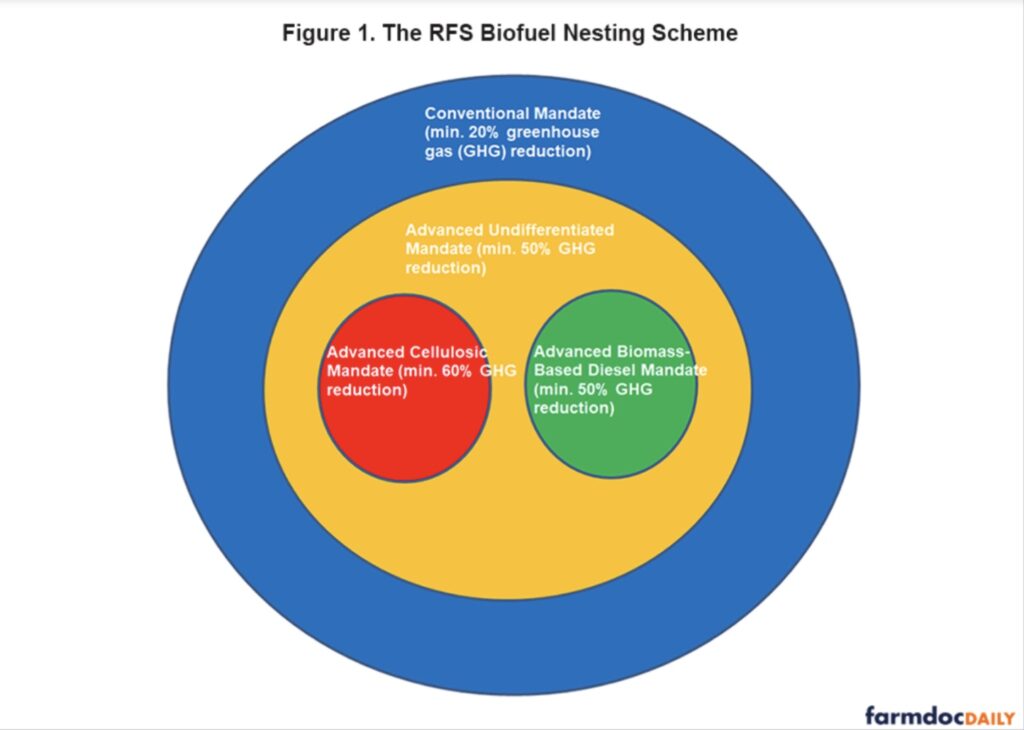
Renewable identification numbers (RINs) are the credits that obligated parties use to demonstrate compliance with the standard. Obligated parties must obtain sufficient RINs for each category to demonstrate compliance with the annual standard.
Obligated parties under the RFS program are refiners or importers of gasoline or diesel fuel. The RFS program’s four renewable fuel standards are nested within each other, meaning that the fuel with a higher GHG reduction threshold can be used to meet the standards for a lower GHG reduction threshold.

The RFS program did not apply to cellulosic biofuel, advanced biofuel, and total renewable fuel until compliance year 2023123456. Which is now. This is very favorable for palm oil in the USA as palm oil fuels can be counted as energy from renewable sources and there is no restriction on how much can be used.
Palm oil refined to renewable meets the highest GHG standard. In the USA, Trucks and Boats will be the last vehicles desirable as Electric Vehicles because renewable Diesel is becoming plentiful and not just in transportation.
Practices combining RSPO certification, peatland avoidance or restoration, biogas capture, high-yield varieties, and renewable energy substitution represent the most robust approach to lowering lifecycle palm oil GHGs well below the 20 percent reduction threshold.
Renewable Diesel is the least expensive fuel for oil heating, at least in Seattle. In January of 2023 renewable bettered fossil derived home heating oil on a cost per gallon basis. The situation is very different in Europe.

In Europe few cars run on gasoline. Most are diesel and hence benefit from renewable Diesel made from palm oil. The European Union (EU) uses palm oil as a biofuel but does not refine it to renewable fuel before being blended with fossil fuels.
An article on mongabay.com states that almost half of the palm oil imported into the EU is used as biofuel, and 100% of the palm oil used for biofuels is certified by the International Sustainability and Carbon Certification (ISCC) scheme, which is approved by the EU through Directive 2009/28/EC on promotion of the use of energy from renewable sources.

The Directive 2009/28/EU Certification is important because it means the imported palm oil product did not contribute to deforestation or worker exploitation.
However, the palm oil when not refined before being used as biofuel is dirtier at the exhaust pipe than fossil fuel. For that and perhaps to protect its rapeseed biofuel industry, the European Commission restricted the types of biofuels from palm oil that may be counted toward the EU’s renewable-energy targets. When refined, palm oil used in EU diesel autos and furnaces is chemically identical to fossil based fuel. The reason Palm oil isn’t processed to be as clean as fossil is because by EU law, it can not be distilled at any EU fossil fuel refinery regardless of unused capacity.

The European Union (EU) had been criticized for its biofuel policies, which have been accused of promoting rapid growth in oil palm farms in Southeast Asia and contributing to deforestation. It also wants to cap other crop-based biofuels at the member states’ 2017 consumption levels and no more than 7% of all transport fuels until 20301 thereby prolonging the transition off of fossil fuels to solar and wind and preserving, in my opinion, some value in its North Sea oil reserves and infrastructure.
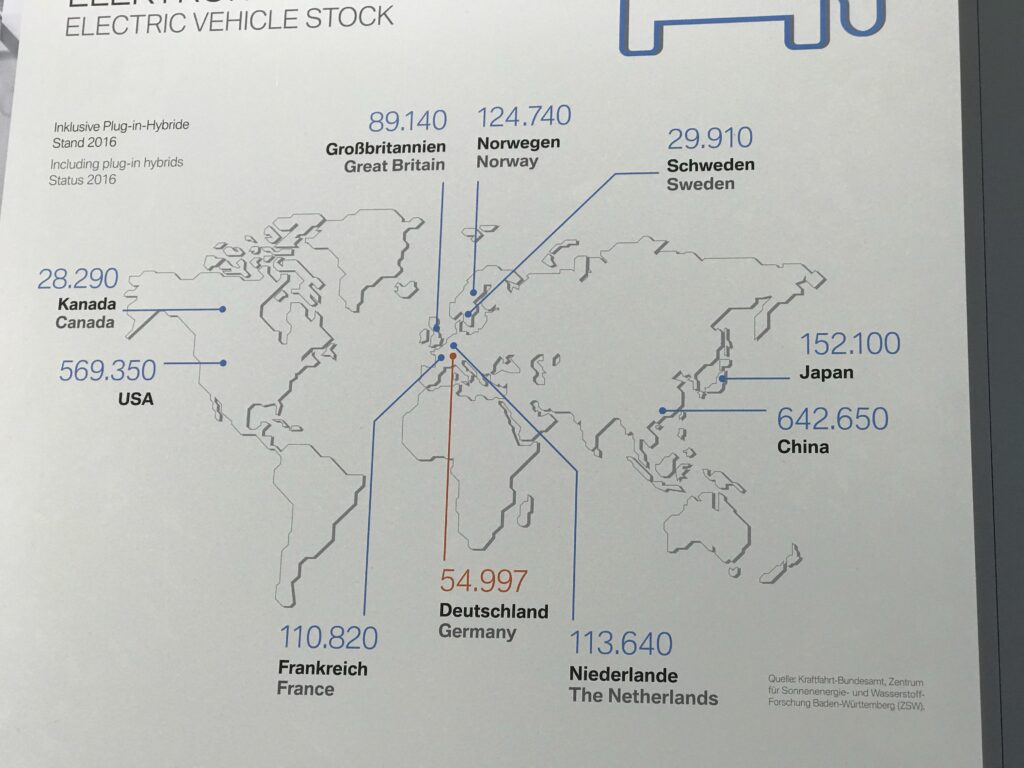
- Certifying palm oil as sustainable: The International Sustainability and Carbon Certification (ISCC) scheme certifies palm oil as sustainable for biofuels. The ISCC scheme is approved by the EU through Directive 2009/28/EC on promotion of the use of energy from renewable sources. The scheme focuses on greenhouse gas (GHG) reductions throughout value chains, sustainable land use, protection of natural habitats, and social sustainability for feedstock production as well as circular materials. It requires different GHG savings targets based on the start date of biofuel/bioliquid/biomass fuel operations2.
- Diversifying its energy mix through biofuels: The EU strategy of diversifying its energy mix through biofuels has been promoted with the objective of reducing greenhouse gas emissions3. But diversification also means curtailing palm oil imports to support the domestic rapeseed industry.
In summary, the EU is promoting the use of sustainable palm oil (that meaning ISCC qualified) for diversifying its energy mix through biofuels but wants less used on a percentage basis than was used in years past with uncertified palm oil. It appears to want to prolong the transition off of fossil fuel by preventing a direct substitute for fossil extractions (palm oil) to be used at EU refineries. It also prefers to whittle down the dominance palm oil has over rapeseed by not counting its use toward some renewable goals and by slowing its import.
The European Parliament approved a landmark deforestation law in April of 2023 to ban imports into the EU of coffee, beef, soy, palm oil and other selective commodities unless companies could provide “verifiable” information the products were not grown on land that was deforested after 2020. This raises questions about the potential motivation of decision makers that should be investigated by the World Trade Organization which has empowered a panel to do so.
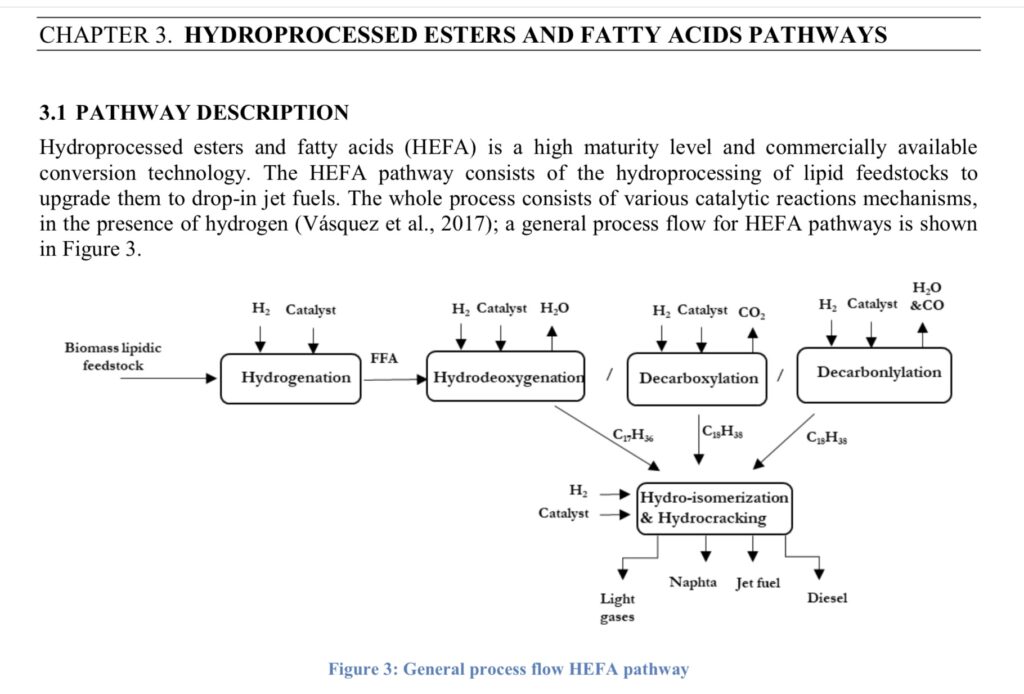
Oil palm farms produce significantly more raw material for biofuel or renewable fuel per acre than food crop farms like corn or soy. According to a 2014 study, oil palm has a larger yield than any other source of vegetable oil, with nearly three times the yield of rapeseed, its closest competitor. The 2014 study found that oil palm produces 3.93 tonnes of oil per hectare per year, while soybean produces 0.38 tonnes per hectare per year and corn produces 0.45 tonnes per hectare per year. This means that EU rapeseed farmers are concerned about palm oil imports replacing rapeseed as the raw material for biofuels and renewable fuels.
The vast majority of renewable diesel in the U.S. is fully refined and cracked using HEFA (hydrotreated esters and fatty acids) petroleum refining technology. This results in a “drop-in” hydrocarbon fuel that meets the same performance specifications as petroleum diesel. Thus, it can be blended at any level, making it potentially a complete replacement for petroleum diesel. In contrast, biodiesel produced using FAME (fatty acid methyl ester) technology must be blended with petroleum diesel in relatively low proportions to be used in modern diesel engines.
Updated Estimates of the Production Capacity of U.S. Renewable Diesel Plants Through 2026
The EU’s biofuel policy has traditionally relied heavily on rapeseed oil, which is produced domestically in the EU. However, the EU’s biofuel policy has come under scrutiny in recent years due to concerns about the environmental impact of biofuels and the displacement of food crops by biofuel crops. As a result, the EU introduced sustainability criteria for biofuels, which led to a decline in demand for rapeseed oil and an increase in demand for palm oil imports. This has led to concerns among EU rapeseed farmers about the future of their industry12. There is more..
Neste, a state-owned Finnish company, has patented a hydrogenation process and intends to flood the European market with cheap palm-oil diesel. In preparation, Neste Oil has built three huge palm oil refineries in Singapore, Rotterdam and Helsinki. This threatens not only rapeseed but also fossil fuel interests.
A 2018 study found that palm oil is known as an excellent raw material because as biodiesel it has similar properties to regular petro-diesel. The study noted that palm oil has several advantages as a potential biofuel source, including its larger yield than any other source of vegetable oil, and that it is cheaper than any other vegetable oil used in biodiesel production2.
The oil palm can be cultivated in Spain and Portugal. It grows in any tropical soil, needing no more rain than soy. But these policies discourage not only imports but also domestic production.

In summary, oil palm farms produce significantly more raw material for biofuel or renewable fuel per acre than food crop farms like corn or soy. Oil palm has nearly three times the yield of rapeseed, its closest competitor, and produces roughly 10 times more oil per acre than soybean or corn. The WTO is more likely than not to disagree with EU policies just based on the appearance of protectionism for beneficiaries of the EU rules (like fossil fuel investors and rapeseed agribusiness.) But WTO effectiveness was severely damaged by the USA Trump administration. Unfortunately, it will take years to regain momentum for enforcement. This has created a standoff.
Here are the EU’s options in the palm oil standoff.
- The World Trade Organization (WTO) could soon rule on two cases brought against the European Union over its decision to phase out the import of unsustainable palm oil by 2030. The complaints were filed by Indonesia and Malaysia, the world’s two largest palm oil producers, who slammed Brussels’ Renewable Energy Directive II as unfair and “discriminatory”1. Indonesia and Malaysia account for about 85% of global palm oil exports and the EU is their third-largest market.
- The EU could comply with the WTO ruling and adapt the environmental policies established by the Renewable Energy Directive II1.
- The EU could attempt dialogue with palm oil exporters, including through the ASEAN-EU Joint Cooperation Committee meeting in Jakarta in late June1.
- The EU could phase out the use of palm oil in transport fuels from 2030, setting up a clash with producer countries such as Malaysia and Indonesia. A text of the deal, seen by Reuters, leaves the wording on details of curbs on palm oil “yet to be agreed,” with EU sources saying the matter remains politically sensitive2.
- The EU could tighten rules on palm oil for biofuels, defining which fuels can be counted toward EU renewable energy targets. Biofuels that indirectly lead to changes in land use and higher greenhouse gas emissions will be excluded by 2023. Palm oil and other crops will have to pass new “objective and non-discriminatory” criteria in order to qualify as low-carbon and renewable sources of energy3.
- The EU could revise its biofuel policies to promote “sustainable” palm oil cultivation in Southeast Asia4.
- Malaysia has threatened to cut Europe off from the world’s most popular oil if the EU’s new law banning the sale of palm oil unless suppliers can prove they haven’t contributed to deforestation is implemented. This after meeting previous requirements but facing the new proof involving deforestation requirements of 2022. Malaysia and Indonesia have filed a complaint with the World Trade Organization, claiming the move was discriminatory5.
- The EU can just not enforce rules, ignore rules established that reduce palm oil imports, and let palm oil meant for cooking oil be added directly by consumers into fuel and furnace tanks. This is what happened in 2022.
In summary, the EU’s options in the palm oil standoff include complying with the WTO ruling, attempting dialogue with palm oil exporters, phasing out the use of palm oil in transport fuels, tightening rules on palm oil for biofuels, revising biofuel policies to promote “sustainable” palm oil cultivation in Southeast Asia, and facing the possibility of a trade dispute with Malaysia and Indonesia.
Can the USA break the stalemate? It should be recognized that the USA is directly responsible for breaking WTO’s ability to do so. There are some factors suggesting a continuation of the Biden administration will draw the USA into the stalemate.
Here are the major companies in the biofuel business.
- Archer Daniels Midland (ADM)
- Bunge Limited
- Cargill, Incorporated
- Louis Dreyfus Company
- Wilmar International Limited
There is no information available on which of these companies are switching from corn, soy, and rapeseed to palm oil for the bulk of their refining. However, that appears likely owing to cost savings.
- According to a 2015 Reuters article, ADM, Bunge, and Cargill are all major players in the North America Edible Oil Market3.
- The agribusiness industry has been dominated by a handful of companies known as the ABCDs, for ADM, Bunge, Cargill, and Louis Dreyfus Company. According to a 2018 Mother Jones article, these companies control the grain-trading market and are major players in the US corn and soybean markets4.
- Cargill Incorporated is a privately held American global food corporation based in Minnetonka, Minnesota, and incorporated in Wilmington, Delaware1. Cargill operates refineries worldwide, including in the USA, Europe, Asia, and Latin America1.
- Bunge Limited is a global agribusiness and food company based in White Plains, New York2. Bunge operates refineries worldwide, including in the USA, Europe, Asia, and Latin America32.
- Archer Daniels Midland (ADM) is an American global food processing and commodities trading corporation based in Chicago, Illinois4. ADM operates refineries worldwide, including in the USA, Europe, Asia, and Latin America4.

Malaysia has contested the EU’s broader Deforestation Regulation (EUDR), which will ban imports of commodities linked to deforestation. The EUDR was set to take effect but the EU postponed enforcement twice—most recently in September 2025—after pressure from trade partners including Malaysia, Brazil, Indonesia, and the United States.
The Neste Corporation’s patent for making renewable fuel has been authorized in the USA, and the company has been expanding its renewable diesel production in the country. Neste has a renewable diesel plant in Rotterdam, Netherlands, and as mentioned previously it has been expanding its production capacity in Singapore and the USA1.

In summary, Cargill, Bunge, and ADM are all major players in the agribusiness industry, that are USA based and supportive of USA policy regarding palm oil. They have operations in the EU that along with other companies such as Louis Dreyfus Company and Ingredion may sway EU policy. The Finland patent for making renewable fuel has been authorized in the USA. The USA sways policy in other countries by encouraging the used of underutilized fossil refineries for renewable refining.
U.S. President Joe Biden’s landmark climate bill has prompted one of Canada’s largest gas-station owners to scrap a planned renewable-diesel plant in Burnaby, illustrating how countries are struggling to counter the U.S.’s green subsidies.
https://vancouversun.com/business/local-business/bidens-green-subsidies-kill-planned-burnaby-biofuel-refinery
A carbon capture pipeline is just one example of how policy is used to generate projects that hope to reduce greenhouse gases. So, what is a carbon capture pipeline? Simply put, it’s a series of pipes and other equipment that are plugged into facilities that emit greenhouse gases, which are then sequestered deep within the Earth.
In this case, I’m referring to the Summit Carbon Solutions five-state pipeline in the Midwestern US. The pipeline will be connected to more than thirty corn ethanol biofuel plants, ultimately transporting carbon dioxide and other gases to North Dakota for burial deep underground.
The Carbon Capture Pipeline: The Latest Bridge To Nowhere

The estimated $4.5 billion Summit Carbon Solutions pipeline would collect carbon dioxide emitted from more than 30 ethanol plants in Iowa, Minnesota, Nebraska, South Dakota and North Dakota, and transport it in liquefied form to be stored underground in North Dakota.

What is Brazil doing with palm oil?
Climate emergency may channel millions in resources toward corn-based ethanol in the Amazon
- An agribusiness magnate from the U.S., who is already the biggest producer of corn-based ethanol in Brazil, plans to leverage “green” investments from governments and banks to meet negative carbon emissions using an unproven method.
- His company is trying to implement in the Brazilian state of Mato Grosso a copy of his Midwest Carbon project, an initiative that plans to capture 12 million tons of carbon in ethanol plants and store them in North Dakota, below ground.
- Even though the company alleges that it is rigorously controlling the environmental practices of its corn suppliers in Brazil, an investigation found that the local executives are themselves connected to illegal deforestation in Mato Grosso.
Brazil is the world’s largest exporter of ethanol, according to Wikipedia. In 2007 it exported 933.4 million gallons (3,532.7 million liters),[111][112]representing almost 20% of its production, and accounting for almost 50% of the global exports.[115] Since 2004 Brazilian exporters have as their main customers the United States, Netherlands, Japan, Sweden, Jamaica, El Salvador, Costa Rica, Trinidad and Tobago, Nigeria, Mexico, India, and South Korea.[115]
The Brazilian car manufacturing industry developed flexible-fuel vehicles that can run on any proportion of gasoline (E20-E25 blend) and hydrous ethanol (E100).[19] Introduced in the market in 2003, flex vehicles became a commercial success,[20] dominating the passenger vehicle market with a 94% market share of all new cars and light vehicles sold in 2013.[21]
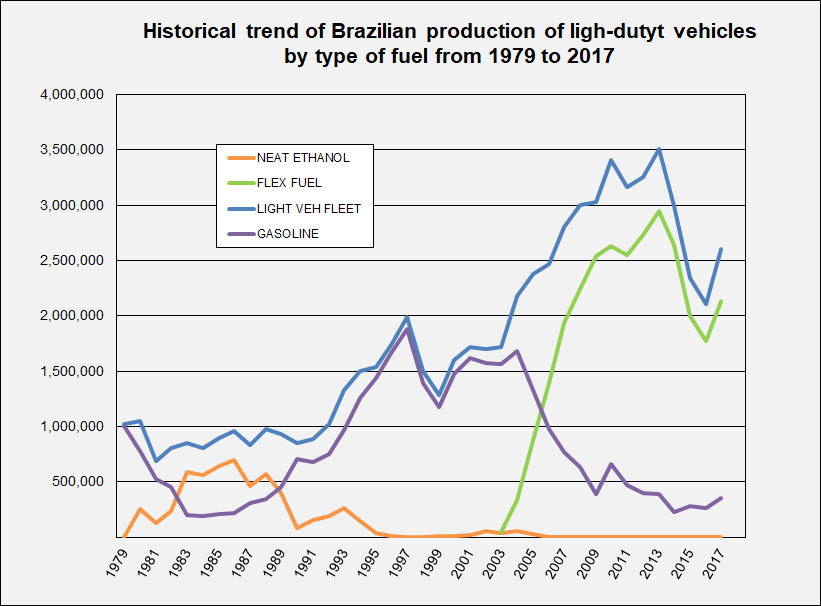
There are no longer any light vehicles in Brazil running on pure gasoline. Since 1976 the government made it mandatory to blend anhydrous ethanol with gasoline, fluctuating between 10% and 22%.[14]

- Brazil produces about 370 thousand tons of palm oil, but the national production cannot supply the domestic demand, and Brazil imports palm oil for refining1.
- The Brazilian Amazon is capable of growing productive oil palms, and palm oil production in the region has been increasing in recent years. The Brazilian government’s incentives for palm oil-based biodiesel have increased pressure on the Amazon, and Roraima, known for its tropical rainforest, is the latest area seeing oil palm expansion 345.
- The sugar cane and soy and other biofuel industries in Brazil may be concerned about palm oil replacing their products at refineries. The Brazilian government’s incentives for palm oil-based biodiesel have increased pressure on the Amazon, and the industry is linked to deforestation, pollution, encroachment of traditional territories, land grabbing, and exploitive labor relations345. However Brazil advocates argued that its Palm Oil plantations actually act as a “barrier against the advance of deforestation” by sugar cain, soy and other biofuel industries. They are still part of the earth’s “lungs”.
- Because of its historically low price, Palm oil is used in a wide range of products at Brazilian refineries, including food products such as margarine, baked goods, and snack foods, as well as personal care products such as soap, shampoo, and cosmetics. Palm oil is also used in biofuel production3.
- Brazil exports palm oil to several countries, including China, India, and the Netherlands1.
- There is no information available on whether Brazil views the USA as an emerging market for its domestically produced palm oil. However, several refineries in Brazil are known to be processing palm oil, including USA firms of Cargill, Bunge, and ADM. These refineries process palm oil for use in the food industry and for biofuel production3.
Agroforestry is becoming increasingly popular in Brazil, including for palm oil production. According to a Mongabay article1, there is a large potential for oil palm agroforestry in Brazil, as it provides options for enhancing ecosystem services while also reducing farmer risk, bolstering livelihoods, and abating the effects of climate change.

Oil palm companies in Brazil are adopting agroecological management techniques and principles in their systems, including species diversity through intercropping, introducing trees in plantations, intensive pruning and mulching to accelerate nutrient cycling, and integrated pest management, among others. Oil palm-based agroforestry systems can be envisaged both in the current oil palm production areas, as well as in new cultivation zones, including suboptimal zones in terms of climate, according to a study published in Cahiers Agricultures2.

The reduction of palm density and the establishment of judicious associations with species that complement each other in terms of access to resources make it possible to envisage higher yields per plant than those that would be obtained in a monocrop palm plantation grown under the same conditions. Oil palm agroforestry is practiced in various regions of Brazil, including the Eastern Brazilian Amazon, where co-designed oil-palm agroforestry demonstration sites were established in 2017/2018 in Tomé-Açu, Pará State, in partnership with Natura, according to a World Agroforestry article3.
The same article states that agroforestry systems appear to be a satisfactory alternative to monocultural plantations of oil palm in Brazil. Another article from Resilient Landscapes4 reports that oil palm agroforestry yields up to 40% more than conventional plantations in Brazil.

We have passed a tipping point in the headwaters of the Amazon, where glaciers have melted and will not come back. We have passed the tipping point in areas of the southern part of the Amazon, where the increased dry season has changed forest composition, forest dynamics drastically.
And the biggest threats ahead include first forest fires. Because of increasing temperature and increasing the length of the dry season, we have a greater risk, and because of this, a greater frequency of forest fires…
Several parts of the Amazon, he (Viana) says, have already passed a tipping point. Glaciers in the headwaters that once fed entire river systems have melted and will not return. The southern forests, exposed to longer dry seasons and hotter winds, are shifting toward something far more flammable and far less stable. Fires are now the threat that keeps him up at night. Not flames alone, but the way they interact with organized crime, illegal land grabs, and the governance vacuum that has widened in some remote zones.
A forest weakened by drought can recover from lightning; it struggles to recover from criminal networks that lock in the damage.
A forest worth more standing: Virgilio Viana on what It will take to protect the Amazon

Several organizations are promoting agroforestry-based oil palm production in Brazil. These include:
- The Center for International Forestry Research and World Agroforestry (CIFOR-ICRAF) 1
- Brazilian Agricultural Research Corporation (Embrapa) 1
- Pará-based cooperative Tomé-Açu Mixed Agricultural Cooperative1
- Natura & Co. 12
- Agroecological Cooperative Organization (OCA) 3
- Federal University of Viçosa (UFV) 3
The initial 6-hectare trial farms begun by Natura/CAMTA in 2008 showed that the yield volume of fruit bunches was 180 kg a plant, compared to 139 kg a plant in monocultures at the same age1. Oil palm agroforestry is practiced in various regions of Brazil, including the Eastern Brazilian Amazon, where co-designed oil-palm agroforestry demonstration sites were established in 2017/2018 in Tomé-Açu, Pará State, in partnership with Natura2.
What is India doing with palm oil?
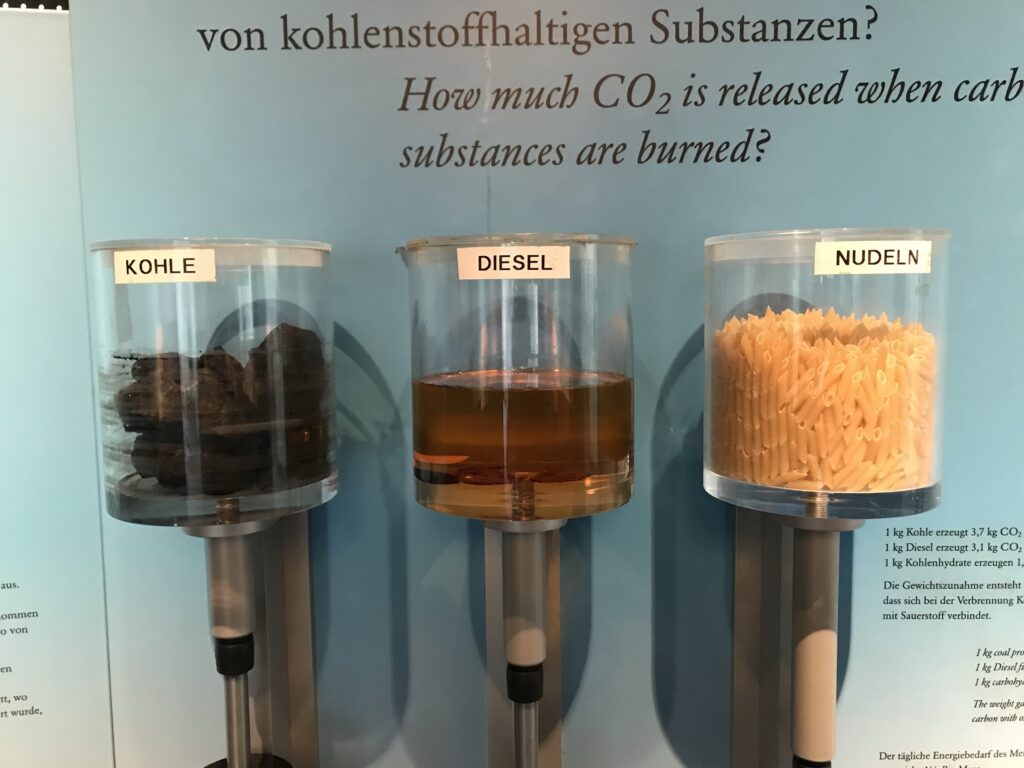
The Indian government has taken several steps to increase domestic production of palm oil, reduce dependence on imports, and promote oil palm cultivation. Here are some key policies and initiatives:
- The National Mission on Edible Oils – Oil Palm was approved by the Indian Cabinet in August 2021. The mission aims to increase the area and productivity of oil palm, with a target of covering an additional area of 6.5 lakh hectares for oil palm till the year 2025-26 and reaching the target of 10 lakh hectares ultimately. The production of crude palm oil (CPO) is expected to go up to 11.20 lakh tonnes by 2025-26 and up to 28 lakh tonnes by 2029-30. A financial outlay of Rs.11,040 crore has been made for the scheme, out of which Rs.8,844 crore is the Government of India share and Rs.2,196 crore is State share1.
- The Indian government has also announced plans to bring an additional 1,500 hectares of land in 17 districts under palm oil cultivation. The ecologically sensitive northeastern states and eastern archipelago of the Andaman and Nicobar islands will also be used for cultivation of the oil. India currently produces palm oil on more than 3,00,000 hectares of land and plans to cover an additional area of 6,50,000 hectares by 2025-262.
- The Indian government has provided support for oil palm cultivation under the Centrally Sponsored Integrated Scheme of Oilseeds, Pulses, Oil Palm and Maize (ISOPOM) during the Tenth and Eleventh Plan3. This support guarantees profits for seeding 10 acres with oil palm trees.
- The Indian government’s push for palm oil production has been criticized for taking a backseat to environmental concerns. India is among the top importers of palm oil in the world, and its demand is Huge. The Indian government has faced criticism for approving plans for palm-oil farms in biodiverse areas like the Andaman and Nicobar Islands, despite concerns about the environmental impact of palm oil production24.
In summary, the Indian government has taken several steps to increase domestic production of palm oil, reduce dependence on imports, and promote oil palm cultivation. The National Mission on Edible Oils – Oil Palm aims to increase the area and productivity of oil palm, and the Indian government has announced plans to bring additional land under palm oil cultivation. However, the government’s push for palm oil production has been criticized for taking a backseat to environmental concerns.
What is Seattle doing?

Seattle has over 13,000 oil burners used for heat. Electrifying oil burners for efficiency has brought several benefits:
- Eliminates emissions: Electrifying homes and businesses eliminates emissions, which is a crucial step towards a 1.5°C future and brings an array of additional health and environmental benefits1.
- Saves money: Through a more efficient use of electrical energy, homeowners can save money on their energy bills2.
- Increases comfort: Electrification can improve home comfort by providing more consistent heating and cooling2.
- Improves safety: Electrification can improve home safety by reducing the risk of carbon monoxide poisoning and other hazards associated with fossil fuel combustion2.
- Reduces greenhouse gas emissions: Energy efficiency, including electrification, reduces greenhouse gas emissions, both direct emissions from fossil fuel combustion or consumption, and indirect emissions reductions from electricity generation3.
- Offers high thermal efficiency: Oil heaters offer more heat per BTU than natural gas, propane, and other heating systems4.
- Fast ramp-up times: Electric boilers have high thermal efficiency, fast ramp-up times, and low downtime, and require no onsite pollution abatement, combustion, or fuel storage5.
- Lowers GHG emissions: Electrification in industry, including boilers, can lower greenhouse gas emissions and improve the efficiency of industrial processes6.
In summary, electrifying oil burners for efficiency can bring several benefits, including eliminating emissions, saving money, increasing comfort, improving safety, reducing greenhouse gas emissions, offering high thermal efficiency, fast ramp-up times, and lowering GHG emissions.
But more can be done because renewable diesel is generally considered to be a cleaner and more sustainable alternative not only to fossil diesel but also to gas3.
The Cherry Point Refinery in Blaine, Washington, was purchased by BP and is the largest refinery in Washington state1. It is one of the newest refineries in the USA, (built in 1971) and was originally built to process Alaska North Slope Crude extractions. BP announced plans to invest $269 million to more than double renewable diesel production at the Cherry Point refinery. 2 3 4 5.
The City of Seattle promotes the use of renewable fuel through its Green Fleet Program, which encourages the use of alternative fuels and advanced vehicle technologies 6.

The investment at Cherry Point is part of a series of new projects to improve efficiency, reduce emissions, and expand renewable diesel production at the refinery 5.
Seattle’s Green Fleet Program is a city initiative that encourages the use of alternative fuels and advanced vehicle technologies to reduce fuel consumption and greenhouse gas emissions. The program includes the following initiatives:
- The city has set aggressive municipal fleet emissions reduction strategies through the Green Fleet Program 1 2.
- Seattle provides access to renewable fuels for boats and furnaces through various fueling stations and suppliers 3.
- Seattle used to provide rebates for removing oil furnaces and replacing them with gas furnaces and heat pumps, but the program has been found counter productive because gas replacement furnaces are worse for the environment than fossil oil and oil furnaces now burn less expensive renewable Diesel. 4.
- Heat pumps can be added to homes with oil furnaces without removing the oil furnaces, and this is a preferable option since renewable fuel can be dropped in. 4.
- The cost of renewable fuel for Seattle home heating varies depending on the supplier and the type of fuel, but it can be less expensive than fossil fuel. 3.
BP in 2022 invested $269 million to more than double renewable diesel production at the Cherry Point refinery, making it the first refinery in the Pacific Northwest capable of providing a reliable source of renewable diesel and jet fuel. The City of Seattle promotes the use of this renewable fuel through its Green Fleet Program.
In summary, Seattle’s Green Fleet Program is a city initiative that encourages the use of alternative fuels and advanced vehicle technologies to reduce fuel consumption and greenhouse gas emissions. Seattle provides access to renewable fuels for boats and furnaces through this program and heat pumps can be added to homes with oil furnaces without removing the oil furnaces. The cost of renewable fuel for Seattle home heating varies depending on the supplier and the type of fuel, but it can be less expensive than fossil fuel. Oil burner Owners with window or split mount heat pumps enjoy the option of selecting which energy source is most economical. For example, discount eligible home owners are likely to use electricity and cut back on renewable Diesel use for heating. But other users may switch between one or the other depending on the seasonal pricing of electricity.
While there is no information available on whether palm oil is involved in the production of renewable diesel at the Cherry Point refinery, BP has promised to make all that is demanded and California is also supplied. Hence, this is anticipated.

What is the Air Plane industry doing regarding palm oil?

As mentioned, renewable Jet Fuel is made at the Cherry Point refinery near Seattle and it likely will use palm oil to meet demand after State supplies of other ingredients are exhausted.
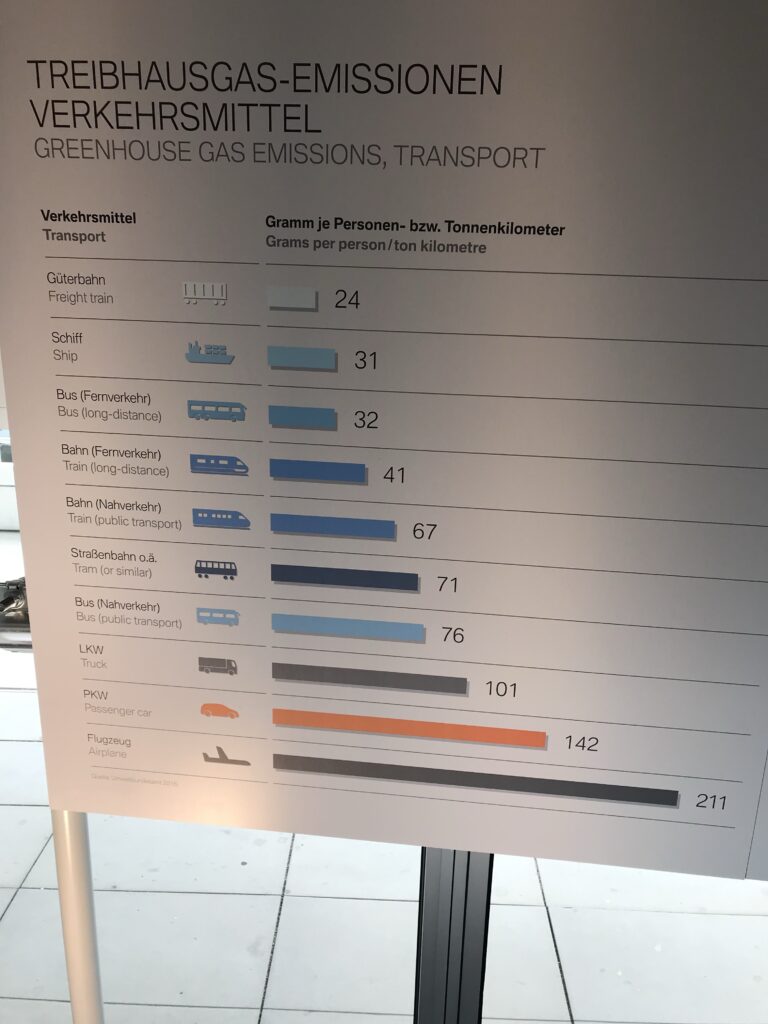
Palm oil is also refined into jet fuel in Indonesia by the state energy company PT Pertamina1. The International Civil Aviation Organization (ICAO) mentions in a document that 5.7 million tons of palm oil are directly needed to produce 208 petajoules of hydroprocessed esters and fatty acids (HEFA) fuels2. This suggests that palm oil is used to produce HEFA fuels, which are a type of sustainable aviation fuel. An article on mongabay.com states that 100% of the palm oil used for biofuels is certified by the International Sustainability and Carbon Certification (ISCC) scheme, which is approved by the EU through Directive 2009/28/EC on promotion of the use of energy from renewable sources.

It is possible to manage an oil palm farm into a diverse forest, and this is becoming a common practice. Today, oil palm plantations are typically established on land that was previously used for soy, sugar cain, sunflower and other biofuel crops. This is because oil palm trees will grow on depleted soil and they do not require more rain than soy sugar cain etc. While the conversion of forested land to oil palm farms is typically viewed as a major driver of deforestation in tropical regions, today it is not. In the first place, oil palms are trees. Second soy, sugar cain and cattle ranches are to be blamed. Because third, an oil palm farm is part of the “lungs of the planet” regardless of it’s common classification as a plantation. Finally, consider Agroforestry.

World Agroforestry (ICRAF) is a centre of scientific and development excellence that harnesses the benefits of trees to make farming and livelihoods more environmentally, socially and economically sustainable. ICRAF is one of the 15 members of the CGIAR, a global research partnership for a food-secure future.
Agroforestry is a land use management system in which trees or shrubs are grown around or among crops or pastureland1. It is a sustainable practice that can provide economic and environmental benefits, such as mitigating the effects of climate change and enhancing ecosystem services213.
Oil palm agroforestry is a specific type of agroforestry that involves growing oil palm trees in mixed systems with other crops, such as cocoa, cassava, and turmeric45.Oil palm agroforestry has been shown to be a sustainable way to grow palm oil without the use of chemicals2.Research has demonstrated that agroforestry systems can produce high oil palm yields and food while also generating profits and environmental services2. Additionally, oil palm agroforestry can provide benefits to local communities by allowing them to focus on their own food security as food crops can be implemented in the system4.Overall, oil palm agroforestry is a sustainable practice that can provide economic and environmental benefits while also allowing for the production of palm oil.
Oil palm agroforestry involves growing oil palm trees in mixed systems with other crops, such as cocoa, cassava, turmeric, maize, groundnuts, açaí, banana, passionfruit, and timber trees like balsa (which is used to make wind turbines) and mahogany12345. These crops are grown in association with the palms during their juvenile phase and can provide economic and environmental benefits while also allowing for the production of palm oil12345. Additionally, the adoption of perennial species, oil palm, and other crops in the farms may improve the diversity of the farms and thus the diversity of household income6.
While it is possible to manage an oil palm farm into a diverse forest, the profitability of producing palm oil means that incentives are required. Oil palm trees are highly productive and can produce fruit for up to 25 years, making them important for farmers. However, the expansion of oil palm plantations onto Soy, sugar cain, and cattle ranches should be viewed as a link to diverse forests, less greenhouse gas emissions, and not biodiversity loss1234.
It is also possible to turn an oil palm farm into a rainforest if there is enough rain. Rainforests are complex ecosystems that are home to a wide range of plant and animal species. The restoration of degraded land to a more natural state requires careful planning, management, and monitoring to ensure that the ecosystem is restored to a healthy and sustainable state5.
Zoos, like the one in Seattle, are involved in wilding rainforests. The term “wilding” refers to the process of restoring degraded land to a more natural state, by supporting animals as well as plants.
Oil palm farms can produce fruit for up to 25 years, but the productivity of the farm may decline over time. The lifespan of an oil palm farm depends on a range of factors, including the age of the trees, the quality of the soil, and the management practices used on the farm. Eventually the value of only palm tree farms will decline when the energy from palm oil isn’t needed owing to solar and wind. But that isn’t necessarily true with an agroforestry managed oil palm farm.
It is difficult to predict when solar and wind will provide all of the earth’s energy needs. But solar and wind energy are rapidly growing sources of renewable energy, they still account for a relatively small share of the world’s energy mix. The International Energy Agency (IEA) has set a goal of achieving net-zero emissions by 2050, which will require a significant increase in the use of renewable energy sources like solar and wind. achieving this goal will require significant investments in renewable energy infrastructure, as well as policy changes to support the transition to a low-carbon economy6.
To hear Brussels tell it, palm oil contributes to deforestation and global warming, and thus runs afoul of “public morals” in the European Union (EU). Indonesia and Malaysia disagree. Both sued the EU at the World Trade Organization (WTO), arguing that Brussels is short-changing palm oil to protect domestic biofuels, including rapeseed and sunflower oil.
The EU will lose this case, and Brussels knows it. Europe’s handling of palm oil is no more grounded in WTO law than it is in science.
https://thehill.com/opinion/international/3669545-the-eus-war-on-palm-oil-is-about-protectionism-not-global-warming/
The major impediment in meeting net-zero emissions is continued dirty fossil extractions. While the eventual halt of those extractions will come owing to solar and wind implementation, it will take at least another decade for solar and wind to meet the majority of the world’s energy needs. The fossil industry is counting on it taking at least three times that long and investments in fossil fuel stocks appear valued that way. The WTO palm oil standoff means that dirty fossil extraction continues when it can be halted in a matter of years with EU support of palm oil.
It is known that the fossil fuel industry has a history of spreading disinformation about climate change and the role of fossil fuels in contributing to it. An article on npr.org explains how decades of disinformation about fossil fuels halted U.S. climate policy. The article mentions that the oil industry focused its PR campaign on denying mainstream climate science and supporting think tanks that denied it as well. It is possible that the fossil fuel industry has also spread disinformation about palm oil.
The fossil fuel industry has been reacting to protect its interests at existing refineries in the USA. Some oil industry groups have been lobbying against the use of renewable fuels, including palm oil-based biofuels, and have been calling for the repeal of the Renewable Fuel Standard (RFS), which as discussed above requires a certain amount of renewable fuels to be blended into transportation fuel each year. All production lines eventually are halted and fossil fuel companies should be managed for shut down rather than protecting market share4.
Please be skeptical of the notion that palm oil is still a major source of deforestation and slavery. Consider the possibility that Agroforestry is making palm oil a climate cure all that will disrupt dirty fossil extractions and remove fossil fuel stocks from investment funds, like pension funds and retirement accounts. Chevron should not be part of the Dow Jones industrial Average.
Most Interesting 2023 Energy Developments
In 2023, the energy sector saw several interesting developments. In the realm of palm oil, Latin American countries like Colombia, Ecuador, Peru, and Brazil emerged as significant producers, with Brazil’s palm oil corporations sourcing oil palm fruits from smallholders, a strategy supported by the Brazilian government2.
Additionally, Malaysia’s palm oil board and state oil firm Petronas signed an agreement to study the use of palm oil as raw materials for sustainable aviation fuel6. An Indonesian airline also flew its first commercial flight using palm oil-blended jet fuel12. In Seattle, BPs Cherry Point Refinery produced enough carbon-neutral Diesel (made from refined palm oil) to allow residents to purchase it for home heating. Previously it had been limited to City purchase.
The COP28 climate conference in Dubai was a significant event, with leaders making ambitious plans for their countries’ respective solar sectors. However, questions remained about the sincerity of these zero carbon commitments3. Despite this, 118 governments pledged to triple the world’s renewable energy capacity by 2030 at COP28, aiming to reduce the share of fossil fuels in the world’s energy production13. The reduction of fossil fuels (rather than fossil fuel emissions) signaled a devaluation of Permian Oil Reserves putting downward pressure on Chevron, the last oil stock in the Dow Jones Industrial Average. Chevron implemented a stock price support program that included buyback of 20 percent of total, coupled with dividend guarantees.
In terms of solar energy, 2023 saw record-breaking installations and technology innovation, particularly in Europe and China34. Wind energy also saw significant growth, with new installations across Europe, the US, and China4.
2024 Energy Developments
The fascination with hydrogen energy stems from its potential to serve as a clean fuel for the global energy transition. Hydrogen can replace fossil fuels without emitting carbon dioxide, making it a zero-carbon energy carrier1. It can be used as an alternative to fossil fuels and has the potential to decarbonize end uses in heavy industry, long-haul transport, and seasonal energy storage25.
However, the current production of hydrogen is mostly from fossil fuels, and its widespread use is still limited by cost and the need for cleaner production methods25. While hydrogen has the potential to accelerate the clean energy transition, its production must shift to cleaner sources to realize this potential2.
The transition to hydrogen as a fuel source faces several challenges, including infrastructure development, cost competitiveness, technological advancements, and the need for cleaner production methods. Key challenges include:
- Infrastructure: Establishing a robust hydrogen infrastructure, including production facilities, storage systems, transportation networks, and refueling stations, is crucial for widespread adoption1. Establishing a comprehensive hydrogen infrastructure, including production, storage, transportation, and refueling facilities, is necessary for the widespread adoption of hydrogen as a fuel source1.
- Cost Competitiveness: Green hydrogen, produced from renewable sources, is currently more expensive to produce than grey hydrogen, which is produced from fossil fuels. Cost reduction is essential for its large-scale adoption35. Investing in technological advancements and scaling up production to reduce the cost of green hydrogen is crucial for its competitiveness with grey hydrogen2.
- Technological Advancements: Advancements in hydrogen production techniques, storage technologies, and transportation are needed to ensure efficiency and cost-effectiveness1.
- Cleaner Production Methods: The majority of hydrogen is currently produced from natural gas and coal, resulting in carbon emissions. Shifting to cleaner production methods, such as using renewable energy for electrolysis, is essential to unleash the full potential of hydrogen as a clean energy carrier5. Shifting towards green hydrogen, produced using renewable energy or low-carbon processes, is essential to decarbonize hydrogen production25.
- Addressing Environmental Concerns: Mitigating the potential environmental impact of hydrogen, such as addressing hydrogen leakage and engaging local communities in project development, is vital for its sustainable deployment5.
Addressing these challenges is crucial for the widespread adoption of hydrogen as a clean and sustainable fuel source.
Governments can incentivize the adoption of hydrogen as a fuel source through various policy measures, including:
- Carbon Pricing: Implementing carbon pricing mechanisms can help close the cost gap between low-emission hydrogen and fossil-based fuels, making low-emission hydrogen more competitive1.
- Subsidies and Grants: Providing financial support, such as subsidies, grants, and funding programs, to encourage the production and use of green hydrogen can stimulate investment and innovation in the sector24.
- Long-Term Contracts: Offering long-term contracts to hydrogen producers and buyers can provide certainty and reduce the investment risk, thus scaling up the adoption of hydrogen3.
- Regulatory Instruments: Using regulatory instruments such as mandates, quotas, and hydrogen-specific requirements in public procurement can create demand for low-emission hydrogen and de-risk investment in the sector1.
By employing these incentives, governments can accelerate the transition to hydrogen as a clean and sustainable fuel source.
The potential risks associated with government incentives for hydrogen adoption include:
- Market Distortions: Excessive subsidies or incentives could lead to market distortions, favoring hydrogen over other potentially more cost-effective decarbonization options5.
- Technological Risks: The rapid expansion of the clean hydrogen industry, backed by aggressive government subsidies, may lead to increased technological risks, as the industry and technology are still emerging3.
- Cost Differentials: The lack of sufficient incentives for adopting hydrogen compared to other fuels, as highlighted by potential end users, could lead to cost differentials between clean hydrogen and conventional fuels, impacting its widespread adoption4.
- Environmental Impact: Incentivizing hydrogen production without adequate environmental safeguards could lead to unintended environmental consequences, such as increased water usage and potential emissions if not produced using clean methods1.
To mitigate these risks, careful consideration of the design and implementation of incentives is essential to ensure the effective and sustainable adoption of hydrogen as a fuel source.
The implementation of a hydrogen energy strategy for replacing fossil fuels is a complex and ambitious endeavor that has been going on for a decade. The transition to clean hydrogen, produced using renewable energy or low-carbon processes, requires significant investment in infrastructure, technology, and policy support.
According to the U.S. Department of Energy, the goal is to increase clean hydrogen production from nearly zero today to 10 million metric tons per year by 2030, 20 million metric tons per year by 2040, and 50 million metric tons per year by 20502. This demonstrates the long-term nature of the transition, with a gradual scale-up over the coming decades.
On the other hand, using palm oil as a feedstock to halt dirty fossil extractions presents less challenges and controversies. While palm oil can be used as a renewable feedstock, its production is limited to Tropical regions4. However it can be refined at facilities currently using fossil extractions.
In summary, the transition to a hydrogen-based energy system is a very long-term endeavor that requires concerted efforts in technology development, infrastructure deployment, and policy support which will not be forthcoming from private industry on its own. Palm oil offers a renewable alternative, that has already been implemented by private industry without the private/public partnerships which threaten the moderated capitalist government of the USA. Therefore, the timeline for implementing a hydrogen energy strategy for replacing fossil fuels is likely to extend over several decades, reflecting the scale and complexity of the transition, and it is doubtful anything will be done involving hydrogen unless oligarchy replaces democracy in the USA because public/private partnerships required by oligarchs will not be forthcoming.
What about Hydrogen
Hydrogen is used in the refining process of both fossil fuels and palm oil to produce cleaner fuels like diesel and jet fuel. The most common source for hydrogen used in refining fossil fuels is steam-methane reforming, where hydrogen is produced from natural gas134. This process is widely used due to its economic efficiency for large-scale hydrogen production.
For refining palm oil into biofuels, hydrogen can also be required, particularly in processes like hydrotreating, where hydrogen is used to remove contaminants and saturate carbon bonds to improve the quality of the final fuel product. The sources of hydrogen for this purpose can vary, but one potential source is the gasification of oil palm biomass itself25. This method can be more sustainable as it uses a renewable resource and can potentially lead to a high percentage of hydrogen in the end product with very little production of residues5.
The use of hydrogen from oil palm biomass is part of a broader interest in renewable hydrogen production methods, which also include electrolysis powered by renewable electricity4. The goal is to move towards cleaner hydrogen production pathways that align with carbon neutrality goals and contribute to a reduction in greenhouse gas emissions.
In summary, hydrogen plays a crucial role in refining both fossil extractions and palm oil into cleaner fuels. While steam-methane reforming from natural gas is the most common source of hydrogen for fossil fuel refining, renewable sources such as biomass gasification and electrolysis are being explored for sustainable hydrogen production for palm oil refining and other applications.



Massive lobbying group creates multimillion-dollar ad campaign to influence 2024 election: ‘Energy is on the ballot’
“The agenda now is no longer denial, but delay.”
https://eco-business.imgix.net/ebmedia/fileuploads/35517816063_e68fd7a184_5k.jpg?ar=16%3A10&auto=format&dpr=2&fit=crop&ixlib=django-1.2.0&q=45&width=700
In landmark deforestation case, WTO finds EU discriminated against palm oil in setting biofuel rules
https://www.eco-business.com/news/in-landmark-deforestation-case-wto-finds-eu-discriminated-against-palm-oil-in-setting-biofuel-rules/
While palm oil production has been a significant driver of deforestation in the past, recent studies suggest that certification, the use of land formerly used for biofuel crops, and management of oil palm farms into diverse forests have reduced deforestation linked to palm oil. Here are some key points from the search results:
A study published in PNAS found that oil palm sustainability certification was associated with reduced deforestation and fire in Indonesia.
.
Another study used remote sensing and spatial analysis to assess the deforestation caused by oil palm plantation expansion in Guatemala and found that certification could not prevent deforestation
.
A study published in Mongabay found that three-quarters of oil palm concessions in Indonesia and Malaysian Borneo certified by the Roundtable on Sustainable Palm Oil occupy land that was forest and/or wildlife habitat as recently as 30 years ago.
.
Another study published in IOPscience found that elevated oil palm mill certification rates had no significant impact on the aggregate likelihood of deforestation in surrounding non-certified supply sheds
.
WWF supports and encourages the use of palm oil produced using responsible and sustainable practices, and encourages companies to create, promote, and support innovative models of sustainable consumption and production.
.
In summary, while palm oil production has been a significant driver of deforestation in the past, recent studies suggest that certification, the use of land formerly used for biofuel crops, and management of oil palm farms into diverse forests have reduced deforestation linked to palm oil. However, there is still debate over whether certification can prevent deforestation and habitat destruction, and the environmental impact of palm oil production remains a concern.